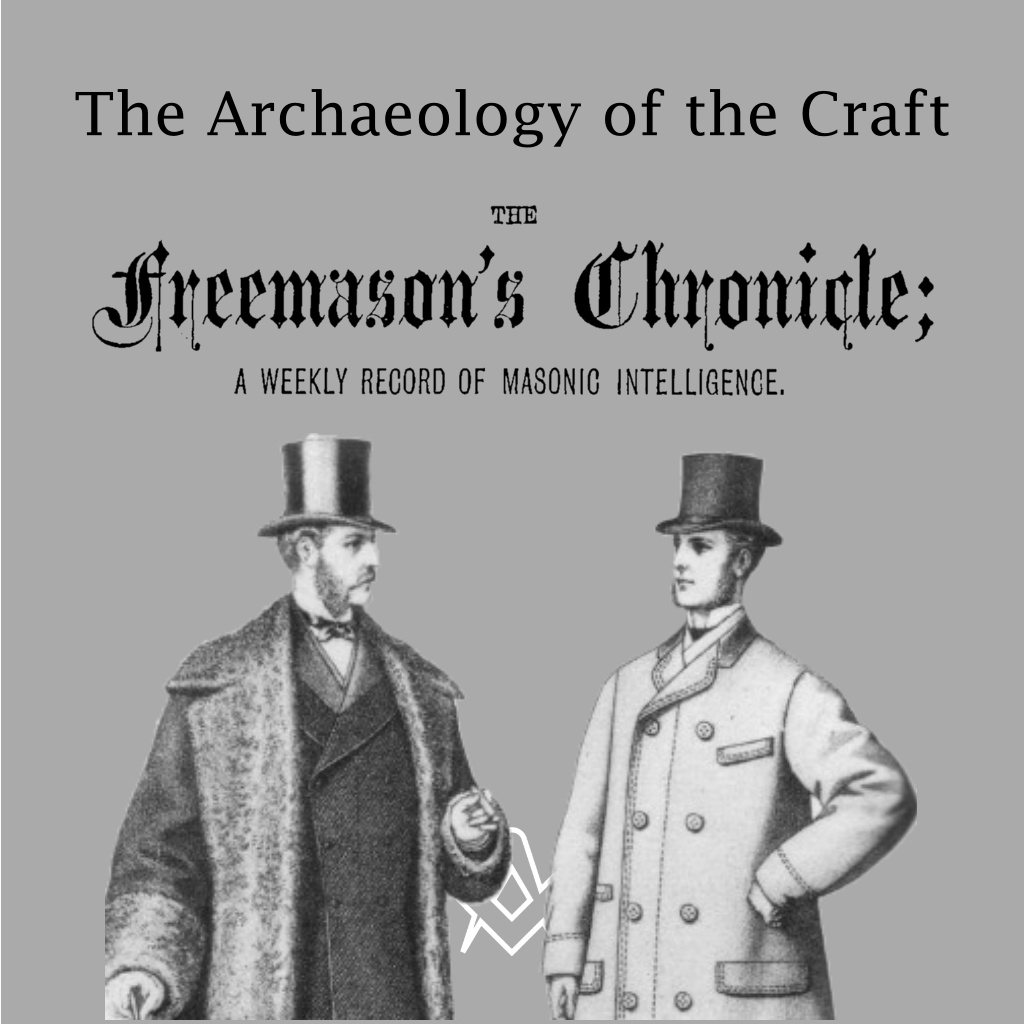Although it has been customary, in tracing the history of Masonry, to date its first corporate beginnings from the period when the Temple of Solomon was reared in majestic silence upon the mystic mount of Moriah, yet it is undoubted that the Craft may claim an antiquity higher far than this.
The Masonic Art is of course as ancient as civilisation.
Man was a builder long before he had learned to live peacefully in social intercourse with his fellows, and the rude hut of the savage is the parent of those majestic structures which in every age have upheld the dignity of the human intellect.
How many ages elapsed before mankind ventured to forsake their rude edifices of timber for those of stone or baked earth, or what daring spirit first thought of poising stones in the air in the enduring form of an arch, it would be idle to conjecture.
From central Asia, which may be regarded as the cradle of the human race, came the first Masons, whose works have existed to the present day.
The cavern temples of India are probably amongst the oldest examples of the work of the sculptor, and it would appear that man first burrowed in the rock before he thought of piling stones in the clouds.
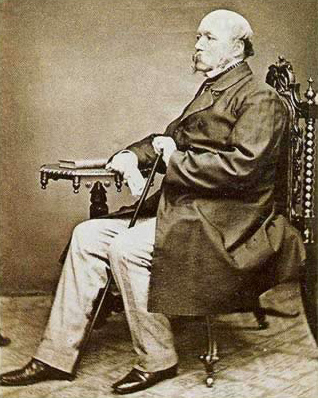
Sir John Gardner Wilkinson, 19th century traveller, writer, and Egyptologist.
IMAGE LINKED: wikimedia Attribution 4.0 International (CC BY 4.0)
The researches of Champollion, Sir Gardner Wilkinson, and other eminent Egyptologists, have thrown a flood of light upon this once obscure subject, and when the history of Masonry is really written the historian will probably be inclined to regard the Pyramids as the proper point of departure, rather than the fair building which Solomon raised in honour of the Great Jehovah.
Egypt in truth may be regarded as the ancient university of science and art.
The caste of the artificers included the Masons as amongst its most important members, and these, congregated in vast cities like Memphis and Thebes, acquired a knowledge of the craft which has never been surpassed by any architects either ancient or modern.

Bust of Herodotus, ancient Greek Historian.
IMAGE LINKED: wikimedia Attribution 4.0 International (CC BY 4.0)
Herodotus…tells us that Thebes possessed a hundred gates and palaces, and temples innumerable.
The priests who received the illustrious Greek traveller were able to point to a history, care-fully recorded, stretching back for ages into the remote past; to a monarchy of many dynasties, which was preceded by a Theocracy probably coeval with Egyptian civilisation.
Recent research has not only confirmed the statement of the wise and observant Herodotus, but it justifies us in throwing back the origin of Egyptian civilisation to a period so remote that the mention of it here would merely excite useless controversy.
Mr. Horner’s researches in the deposits of the Nile appear to show that, thirteen thousand years ago, man, sufficiently civilised to be in possession of pottery hardened by fire, lived in the Nile valley.
However much we may be inclined to question the data upon which the calculations of this gentleman were made, we are yet constrained to admit that the age of the more ancient of the monuments of Egypt has been under estimated.
When Napoleon told his troops that forty centuries looked down upon them from the summits of the Pyramids, he was merely stating the current opinion of his time.
In these days most persons skilled in Egyptology would be inclined to admit that two thousand years ago these celebrated monuments of kingly ambition were looked upon by the Egyptians as ancient buildings, connecting the remote past with a high and complex civilisation.

The Great Sphinx partially excavated, photo taken between 1867 and 1899 – By Maison Bonfils (Beirut, Lebanon), photographers : Félix (1831-1885), his wife, Lydie (1837-1918) and his son, Adrien (1861-1929). Most possible done by Félix. .
IMAGE LINKED: wikimedia Attribution 4.0 International (CC BY 4.0)
The Masons who built the Pyramids were undoubtedly highly skilled in geometry ages before Euclid wrote his celebrated treatise.
Those who state that he created the science of mathematics know little of the history of that marvellous people who made the Nile valley a land of wonder and mystery.
That the Egyptian Masons were thoroughly skilled in the science is undoubted, and that they were banded together in fraternities may fairly be assumed from the fact that Mason marks can still be traced in the ruins of the Temples and buildings they erected.
It has indeed been suggested that the arrow-headed character in which the inscriptions on the walls of Nineveh, are recorded originated in Mason marks, and it may be that we should look East of the Nile for the first signs of that mystic tie which has knit together so many generations of skilled artisans.
Whether this be so or not, Egypt must be still regarded as the real cradle of Masonry, since it was here that the art first attained perfection.

Oxyrhynchus papyrus (P.Oxy. I 29) showing fragment of Euclid’s Elements
IMAGE LINKED: wikimedia Attribution 4.0 International (CC BY 4.0)
Sir Gardner Wilkinson has shown, in his celebrated work, that the Arch was invented by Egyptian workmen.
More than one example of this daring mode of roofing is to be found in the most ancient of the Nile monuments, although the preference for straight instead of curved lines in architecture prevented its adoption as a prominent structural feature.
There can be no doubt that the ancient people who settled upon the shores of the Mediterranean, derived the main features of the arts for which they were afterwards distinguished from the land of the Nile.
Greece was undoubtedly indebted to Egypt for the principles of Science and Art, and the people who lived at the head of this great inland sea was closely connected with the same great parent of the science of civilised life.
![]()
Egyptian Arches, Existing in Thebes, and several animal Mummies illustration from the kings tombs in Thebes by Giovanni Battista Belzoni (1778-1823) from Plates illustrative of the researches and operations in Egypt and Nubia (1820). Original from New York public library. Digitally enhanced by rawpixel.
IMAGE LINKED: New York public library / rawpixel Attribution 4.0 International (CC BY 4.0)
The Phoenicians no doubt derived much of their knowledge from Egypt, and the structural features of Solomon’s Temples how that they adopted the main lines of Egyptian architecture.
Mr. Fergusson’s Handbook clearly shows that the ground plan of the Temple at Jerusalem differed in no essential feature from the great temples of Thebes and Memphis.
In one respect, indeed, it differed from all, and that was in its extremely small dimensions.
The reader who may have been accustomed to regard this celebrated building as vast in size, as well as splendid—as it undoubtedly was—in decoration, will be surprised to learn that the Temple proper might have been placed inside an ordinary parish church.
Design of the Temple. In white, the porch, in blue the sanctuary and in pink the Holy of Holies containing the Ark of the Covenant.
IMAGE LINKED: wikipedia Attribution 4.0 International (CC BY 4.0)

Plan of the Temple of Edfu Encyclopædia Britannica Eleventh Edition, Vol. 2, Page 373.
IMAGE LINKED: wikipedia Attribution 4.0 International (CC BY 4.0)
Yet nothing is more certain than this fact, which has hitherto been too much obscured by the glosses of commentators of the sacred scriptures.
The dimensions, as given in 2 Chronicles in., are as follows. The length was sixty cubits, and the breadth twenty cubits.
The porch was twenty cubits in breadth, and one hundred and twenty in height.
The Hebrew cubit was the length of the fore arm, from the elbow to the tip of the middle finger, or twenty-two inches.
Reduced to feet, the Temple was in length 110 feet; in breadth 36 ft. 8 in., while the porch, or temple front was 36 ft. 8 in. in breadth, by 236 ft. 8 in. in height. Leaving the porch out of consideration, and this was only remarkable for its height, it will be at once seen that our assertion that the building could have stood within an ordinary parish church is certainly within the mark.
This celebrated structure was surrounded by courts and buildings of various kinds, and the whole no doubt produced a grand and imposing appearance.
It is, however, hardly reasonable to suppose that the erection of this small structure, apart from the purposes for which it was intended, could be of sufficient importance to mark an epoch in the history of Masonry.
The workmen may indeed have learned the sublime creed which was given to the Hebrews by Jehovah, and this circumstance may have given to the symbolism of the Craft a dignity and significance it could not have possessed before, but we must look beyond the artisans of Tyre for the early traces of that mystic brotherhood who have played so great a part in human civilisation.
Tomb at Deir el-Medina, West Bank of Luxor – the ancient village of the artisans originally named Set Maat – the Place of Truth. The stone masons, painters, and woodworkers who lived there excavated and decorated the tombs of the nobles and royal families in the Valley of the Kings and beyond. They built their own tombs in the village, it is now a UNESCO World Heritage Site.
IMAGE LINKED: wikimedia Attribution 4.0 International (CC BY 4.0)
As we have said, we look to Egypt for these early traces.
The highest and grandest truths of modern speculative Masonry were early taught by the Egyptian priesthood, and now that the secret of the sacred hieroglyphics has been unfolded, we are familiar with the fact that this celebrated hierarchy carefully distinguished between the great Architect of the Universe and the crowd of inferior gods with whom they surrounded him; and in the story of Osiris we have the first germs of that mystic sacrifice, which was consummated ages afterwards on Calvary.
The Egyptian mysteries, which were so carefully guarded from the vulgar, were, we have reason to believe, merely scientific and moral truths, having for their centre and source the Supreme Being, in whom the superior grade of priest steadfastly believed.
These truths were not entirely lost with the decline of Egyptian civilisation, and in the celebrated Dionysian mysteries we may doubtless trace an Egyptian origin.
If the Greek mythology, as there is reason to believe, is in part derived from the Egyptian system, the clue to the real origin of the Dionysian mysteries is complete.
But we must leave this interesting subject for the present, with an earnest recommendation to our brethren who may be interested in the Archaeology of the Craft, to follow the path we have thus roughly and hastily sketched out.
Source: The Freemason’s Chronicle – January 30, 1875
Additional image research by the Square Editorial team
 The Freemasons Chronicle, a weekly record of masonic intelligence, was first published 2nd January 1875 London, England as an independent weekly journal of masonic interest and continued for 27 years.
The Freemasons Chronicle, a weekly record of masonic intelligence, was first published 2nd January 1875 London, England as an independent weekly journal of masonic interest and continued for 27 years.
It should be the business of a journal devoted to the interests of the Order to attempt the removal of prejudices such as these, which, though they may have little perceptible influence upon the prosperity of the Fraternity, yet have the effect of preventing timid or ill-informed persons from enlisting under its banner.
It will not only attempt to keep pace with the growing literary requirements of the day, but it will seek to exhibit the Order to the non-Masonic world divested of its technical details, and clothed in the garb of Charity and Brotherly Love.
The questions of the hour, which exercise the minds of thoughtful men, will be handled freely and broadly, without any tinge of political or sectarian bias.
The memoranda of Masonic gatherings which will appear from week to week, will be full and accurate; and as free interchange of opinion is one of the best signs of life and vigour in any society, ample scope will be given for Correspondence on topics of interest to the Order.
If we may venture upon a new rendering of words which recent events have made memorable, we will say here, once and for all, that we will be keen men of business, and will spare no effort, consistent with honour, to achieve commercial success; but first, and before all things, we will prove to our brethren and the world that we are FREEMASONS.
Recent Articles: The Freemason's Chronicle
 Operative And Speculative Masonry Explore the fascinating transition from Operative to Speculative Masonry in our latest post. Discover historical insights from Augustus C. L. Arnold and Rev. Wm. P. Strickland, shedding light on Freemasonry's evolution and its enduring principles. Dive into the rich history and significant milestones that shaped modern Freemasonry. - The Freemason's Chronicle - 2 September 1876 |
 Discover the true essence of Freemasonry, an ancient order founded on the profound principles of love for God and man. It's a call to rise above mere appearances, to embody genuine virtue and benevolence, transcending societal pretense. Embrace the transformative power of simplicity, and let the authentic glories of Freemasonry inspire your path. |
 Discover the intriguing story of a man who became a Mason but openly professed his dislike for the institution. Unravel the peculiar circumstances that led him down this path and explore the unexpected consequences that followed. Dive into this thought-provoking account that challenges our notions of loyalty and reveals the complexities of human nature within the Masonic fraternity. |
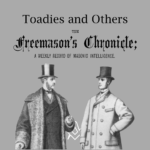 In the realm of Masonry, the principles of equality and respect are paramount. Yet, the presence of toadies—those who obsequiously seek favour from the influential—threatens these ideals. While Masonry embraces diverse beliefs and backgrounds, it rejects the sycophantic behaviours of toadies, flunkeys, and tuft-hunters, urging members to uphold genuine respect and self-worth. The Freemason's Chronicle - 22nd January 1876 |
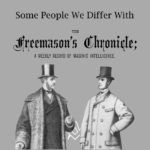 Unveiling the Unpleasant: Some People We Differ With Discover the intriguing dynamics of quarrels within the Masonic brotherhood. From the cantankerous to the litigious, the peevish to the vengeful, delve into the characters that challenge fraternal harmony. Explore their motives, temperaments, and the art of navigating disputes with these fascinating brethren. Brace yourself for a riveting journey into the world of conflicting personalities. |
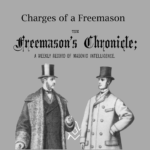 Unravelling the Masonic Mystique: A Deep Dive into the Freemasons' Charges - Explore the intricate world of Freemasonry, its principles, rituals, and the mechanisms for resolving internal disputes. Discover how this ancient fraternity fosters unity, promotes moral conduct, and upholds the sanctity of its secrets, while navigating the complexities of modern society. - The Freemason's Chronicle - 4 December 1875 |
 Unlock the hidden lessons of Masonic Studies! Don't settle for superficial knowledge or mere rituals. Discover the true depth and meaning behind Freemasonry. Expand your understanding of Tracing-Boards, Lectures, and more. Join regular Lodges of Instruction to enhance your Masonic journey. Become a knowledgeable Freemason, not just a token-bearer. Unleash the power of true Masonic wisdom today! |
 Uncover the incredible story of how Masonry saved the life of a Crimean War foot soldier in this historical and masonic account. Through the first hand experience of a soldier engaged in fierce hand-to-hand combat, witness the fateful encounter with a Russian Freemason that changed the course of his life. Learn how brotherhood and a deep dedication to the craft can lead to unforeseen and life-saving circumstances on the battlefield. |
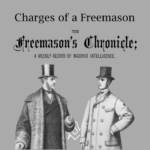 The Freemason's Chronicle - Charges of a Freemason The secrets of Masonry are the exclusive property of the Craft, and can never be communicated to one who is a mere labourer and not an accepted Mason. Hence, no labourer, that is, one who has not been regularly initiated in a legal Lodge. Article first published in The Freemason's Chronicle, 27 November 1875 |
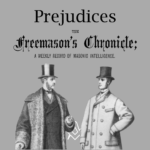 The Freemason's Chronicle - Prejudices Prejudices are partial judgments in favour of, or against certain persons or things, and, for convenience sake, may be ranged in two categories—those which are, comparatively speaking, harmless, and those which are harmful. Article first published in The Freemason's Chronicle, Oct. 2 1875. |
 The Freemason's Chronicle - Cliques Is Freemasonry - a Clique ? Man has been defined as a gregarious animal, but in his highly civilised condition he is gregarious only to a limited extent. First published in The Freemason's Chronicle, Oct. 2 1875, addresses the same challenges then as now. |
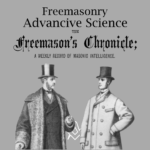 The Freemason's Chronicle - Freemasonry - an Advancive Science Is Freemasonry - an Advancive Science ? Not to confuse advancement with innovation. Has it been the case that Freemasonry's survival for 300 years plus is due to being an Advancive Science, tending to advance. First published in The Freemason's Chronicle 18 September 1875, addresses the same challenges then as now. |
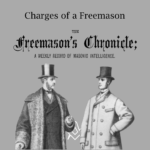 The Freemason's Chronicle - Charges Of A Freemason An interpretation of the "Charges of a Freemason", written Bro. Cornelius Moore and published in 1875, that introduce certain opinions that for some readers, will not sit well in contemporary times. - The Freemason's Chronicle, Sept. 11, 1875 |
 On The Order Of The Temple And Its Doctrine. THE Order of the Temple is divided into two great classes, denominated respectively the Order of the Temple and the Eastern Order. The Eastern Order gave birth to the Order of the Temple, and in the course of time has become an appendage of the latter. It is in ancient Egypt that we find the cradle of the Eastern Order. The Freemason's Chronicle, Sept. 4, 1875 |
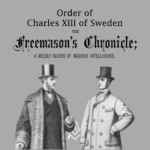 Order of Charles XIII of Sweden The following translation of the Manifesto of King JL Charles XIII of Sweden, on the occasion of his establishing the Masonic Order which bears his name, and of the Statutes of the said Order, may be interesting to our readers. The Freemason's Chronicle, Aug. 28, 1875 |
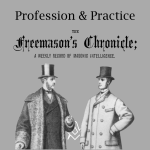 Most of our readers in the course of their experience, have doubtless met with enthusiastic brethren who take it for granted that a Mason can do no wrong. These enthusiasts are thoroughly convinced that the vast majority of those who join the Order are the most benevolent, the most moral, and the very noblest members of society. - The Freemason's Chronicle 10 July 1875 |
 An article investigating the relationship between masonry and citizenship. Are the principles of Freemasonry aligned with the freemason's claim to be a better citizen of the world? The Freemason's Chronicle - 19 June 1875 |
 A visitor must make clear his identity to the satisfaction of the Lodge he proposes to visit. More than once have we been asked to explain our views as to the reception of strangers in a Lodge. - The Freemason's Chronicle - 29 May 1875 |
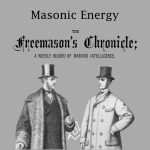 Is there reason in the accusation that Masonic energy looks only to a course of good feeds, when we can point to such grand results as have been achieved in these latter years, both in respect of the extension of our Order ? - 1May 1875 |
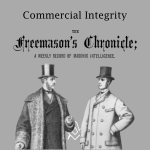 Implementing Freemasonry's peculiar system of morality in our day to day business affairs was the topic of this article, Commercial Integrity, first published in The Freemason's Chronicle - 8 May 1875 |
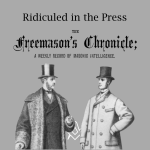 Ridicule has been somewhat illogically described as the test of truth. If it were so, Freemasonry ought to have perished long since. Two press reports from May 1875 covering the |
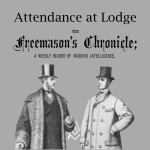 There are many things which Freemasonry will do for a man in the way of opening his mind and giving him larger and kindlier views of life, but Freemasonry itself, cannot eradicate the natural bias of the disposition. |
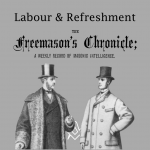 There is, we fear, too marked a tendency in very many Lodges to hasten through its labours, with a view to entering, as soon as possible, upon the business of refreshment. - The Freemason's Chronicle 17th April, 1875 |
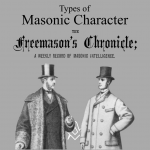 Another example that demonstrates that nothing really changes in Freemasonry. In an article the Types of Masonic Character published 145 years ago in The Freemason's Chronicle 10th April, 1875 |
 A brief history on the relationship between the British Monarchy and the craft - The Freemason's Chronicle 20th March , 1875 |
 What are the qualities of a convivial man and how does this dovetail perfectly in to Freemasonry ? 16th March, 1875 |
 A review of the "Sketch for the History of the Dionysian Artificers," a fragment, by Hyppoli to Joseph Da Costa - This little work may be regarded as, so to speak, the Holy Grail of Masonry. |
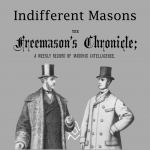 Nothing really changes, an article Indifferent Masons, From Le Monde Maçonnique 1874. Translation published in The Freemason's Chronicle 20th February, 1875 |
 In handling an intruder in the lodge, we endeavoured to show that a good Mason should be a gentleman, and a sincere man. The Freemason's Chronicle 20th February, 1875 |
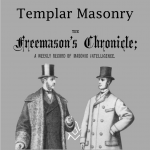 Templar Masonry - a historical aspect of the Religious and Military Order of the Temple published in The Freemason's Chronicle 13th February, 1875 |
 Secrecy perhaps the strongest objection urged by the enemies of the Masonic Order against its existence published in The Freemason's Chronicle 20th March 1875 |
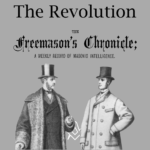 Freemasonry In The United States during And After The Revolution We take a look at Freemasonry in the United States during and after the Revolution first published in The Freemason's Chronicle - February 6, 1875 |
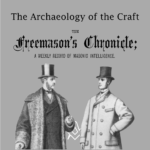 We take a look at the archaeological connection with the Craft, first published in The Freemason's Chronicle - January 30, 1875 |
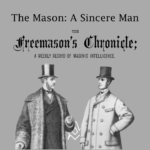 What it means to a Freemason to be a sincere man. Extract: first published in The Freemason's Chronicle - January 23, 1875 |
 What it means to a Freemason to be a citizen of the world ? First published in The Freemason's Chronicle - January 16, 1875 |
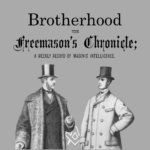 Brotherhood! In that one word what sympathetic associations arise. First published in The Freemason's Chronicle - January 9, 1875 |
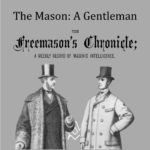 This opening article was written 145 years ago, yet it resonates with Freemasons today as it did then. First published in The Freemason's Chronicle, January 2, 1875, Issue 1 |
masonic knowledge
to be a better citizen of the world
share the square with two brothers

click image to open email app on mobile device


